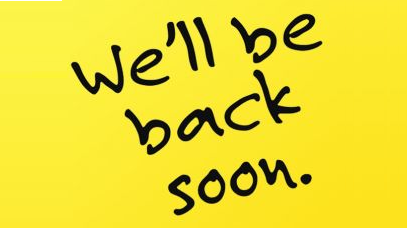I remember one event vividly in the first seven years of my career. I was working with a peer on an incredible product. We decided to go grab coffee. Out of the blue, my colleague decided to pop off on one of the other products. The language was shockingly coarse and the tone of the entire conversation was angry and surprising. My colleague continued on in this manner for about ten to fifteen minutes. At the end, he took a deep breath, looked at me and sighed in relief.
“I feel better,” He said with clear satisfaction, “Now let’s get back to work.”
I believe this was my introduction to venting.
So what is venting? What is good about it and what is bad about it?
Venting is a method of relieving stress and tension. Over the years I have seen many flavors of stress relief—from disconnecting, quiet introspection (often while walking), and venting.
Venting is when you articulate many or all of the things that are bothering you about a particular subject. I have met many people who want to vent about their problems before they can constructively solve them. There are times that I like to vent about things.
When I am venting about a subject, I am not always looking for feedback or any action items to address the problems. I just want to articulate what is bothering me. The act of putting words to topics that are angering or frustrating me feels good. I think this is true for others because I have heard many people vent about issues to me also.
It is important to pick your audience when you are venting. It is very bad to vent to the wrong person. You might find your angry words come back to haunt you if you decide to “go off” and the person to whom you have vented is not a friend or confidante. I have had many of my subordinates vent to me over the years and I generally double check with them to see if they are just getting things off of their chest or if they need my help with them. I absolutely relate to someone if they tell me they are just venting.
I am not sure if there is a good or easy litmus test for how to pick someone you can trust to vent to. Sometimes it is a peer with whom you have been through a stressful work event, sometimes it is a good friend who you do not work with directly, or maybe it is a family member or a mentor.
If you are on the receiving end of someone venting, you should listen to them and empathize with their situation. I have caught myself a few times wanting to offer feedback or advice and I try to refrain unless I know that is what they are looking for. Sometimes someone just wants to be heard.
Another tendency to be careful about is to minimize their experience. It is easy to say “I had it worse” or “is that really your biggest first world problem today?” It is not always helpful to the person who is venting.
If someone is venting to you, it is important to realize it means they really trust you. You should listen to them intently and keep their frustrations in absolute confidence. You should talk to them about how you can help with these problems and they might tell you “I just needed to talk about it, I do not need any help.” You should absolutely respect their wishes in this regard. This is a hard one for me because I love to solve problems.
The longer you work professionally, the more likely you will develop a trusted relationship where you or someone else are capable of venting.
If your boss is venting to you, you should cherish that. You are getting a glimpse at what problems are like at the next level and it means that your boss trusts you.
I decided to write this because recently someone started venting to me. I appreciate when people decide to demonstrate that level of trust. It is a special moment.
If you are not in possession of a trusted friend or colleague, then please consider buying this obviously promoted and super expensive spiral bound venting journal from Amazon. Yes I am an Amazon Affiliate, and yes I found the most expensive product to shamelessly shill. This is also the first time the product I am suggesting to you is related to the topic—and probably the last.
Unless, of course, you are moved to purchase said item by the mental imagery of writing down your angry thoughts coupled with the thrilling sensation of ripping that page from your journal, crumpling it up and setting it on fire (disclaimer: be responsible in your use of angry fire) as a means of solo ranty release: Behold my smooth words!
If this works you can take pleasure in the fact that you set me on the road to riches and greatness. Remind me later that you are the reason that I am successful and I will let you follow me on the Insta.
Hashtag Grateful
Hashtag SeeYouNextWeek









